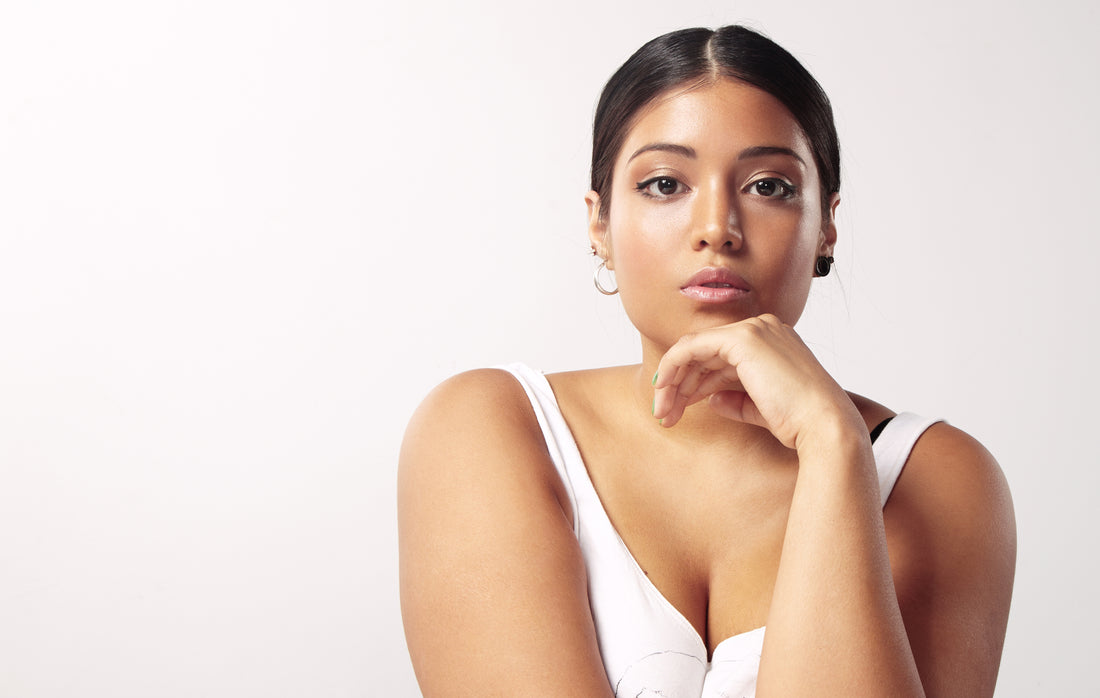While the terms “plus-size” and “size-inclusive” are plastered all over the internet, including our social media feeds, one question still remains. Does the fashion industry know what plus size really means? Even though big and small brands alike are shifting their focus from strictly small sizes to ‘inclusive’ catalogs, men and women have been vocal about the sheer lack of options in clothing.
The distorted representation of plus-size models in the fashion industry
While we do start to see a representation of different body types, the models who end up scoring these plus-size sponsorships, eCommerce photography shoots, or lookbooks, are in fact, not plus size, but medium. The reality is that outside the fashion sphere the term ‘plus size’ is used to refer to clothing and body types that extend beyond a size 16. If you take a moment to look at the actual ‘rules’ of the industry, plus-size models are defined as anyone larger than a size 6. In 2022, this highly unrealistic view on plus-size women changed a bit; now plus-size models are a size 12/14.
‘Plus size’ refers to a certain body type
As Gianluca Russo, InStyle editor points out, ever notice how even plus-size nodels have the same body type? This mostly refers to the hourglass figure that seems to be a necessity. “I don’t have that [hourglass body]. Where’s the girl who has stretch marks up and down her legs, and cellulite, and is top heavy or is bottom heavy, or has a variation of where she holds her weight? Why is it just one type?” model Hunter McGrady told InStyle.
Medium-size VS plus size
To put this into perspective, the global annual worth of the plus-size industry is $194 billion. In 2020, it was estimated that the women's plus size apparel market in Canada generated approximately 1.73 billion. Plus-size in the US alone is growing at nearly twice the rate of the overall apparel market.
According to PLUS Model magazine; "In the fashion industry, plus size is identified as sizes 10-14, super size as sizes 1X-6X and extended size as 7X and up". 67% of women in the U.S. wear a size 16 or up and only 33% don’t. These numbers certainly don’t reflect the true meaning of being a plus-size woman outside the glitz and glamour of the fashion industry.
Does the fashion industry know that the clothes don’t fit the plus-size body?
Apart from the evident lack of knowledge of what a plus-size body looks like. Seeing average-sized women with small waists and curves being presented as the quintessential image of ‘curvy’ or ‘plus size’ is not the only issue with the fashion industry today.
Although some retailers and brands try to create size-inclusive clothing for their newest collection, there is still little to no understanding of the shape and fit preferences of plus-size women. Pattern grading continues to be one of the main difficulties. In reality, you can't simply take a small or medium-sized garment and extend the measurements in order to fit a certain, large body type.
The overall shape and balance of plus-size clothing are vastly different from ‘regular sizes’. You cannot simply expand the pattern; clothing patterns should be developed individually to match different lines or proportions or the three-dimensional body you are trying to cater to.
“When brands aren’t able to fit a garment properly, it has the capacity to harm the confidence and well-being of the women that they’re serving,” mentioned Fashion United.
Different sections leave much room for body shaming
Plus-sized consumer and content creator Pooja Sukhwani raised her frustration at the brands that separate their size ranges by sections. “It’s beyond me as to why we even need a separate shelf for plus-size people? If the brands call themselves size-inclusive then why do they separate it completely? Why would one want to go into a store and ask where’s the plus-size section? If consumers can freely look for size up to UK 12, why would I, UK 18, ask separately?” she mentioned.
These inclusive merchandising tactics don’t seem to be that inclusive after all. Not if you have to divide customers into two different groups in-stores. “Why is a straight-size Calvin Klein on the bottom floor, but a plus-size Calvin Klein upstairs and in the corner? Sukhwani added.
Size-inclusivity is not really inclusive - yet
At the end of the day, does the fashion industry know what plus size really means? Not exactly. Even though we’ve noticed a huge improvement in the way plus-size bodies are represented in the media, we have a long journey ahead of us.
At Ms.Meri Mak, we’ve introduced the Meri Curve Collection; A curated line of plus-size women's clothing that can take you from day to night with ease. From utterly chic floral dresses and elegant tunic shirts to superhero staples such as jeans and denim button-ups, we’ve got you covered.

